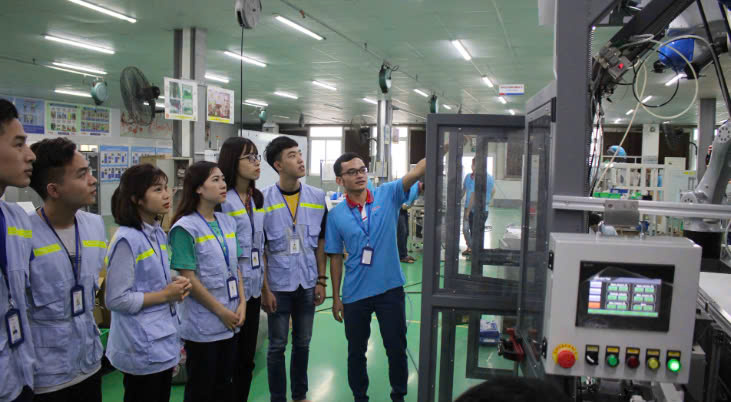In the context of a rapidly changing global economy, the quality of the workforce has become a crucial factor in determining national competitiveness. To meet the increasingly stringent demands of the labor market, the collaboration model between businesses and educational institutions is seen as a vital solution. In 2024, this trend in Vietnam has garnered significant attention as both parties recognize that combining academic theory with practical business experience is the key to creating opportunities for students and economic organizations alike.

For schools, this model helps bridge the gap between theoretical knowledge and real-world demands. Instead of focusing solely on academic content, many universities and colleges have begun updating their curricula based on the needs of businesses. This not only enables students to acquire knowledge but also equips them with the skills necessary to adapt quickly to the workplace. For example, in 2024, the National Economics University partnered with more than 200 domestic and international businesses, providing thousands of internship opportunities for students. Thanks to this, students are not only able to gain practical experience but also build relationships and expand their professional networks while still in school.
From the business perspective, this collaboration brings tangible benefits. Instead of facing the costs and time required to train new employees, companies can access and "nurture" talent from the very beginning. In 2024, VinFast has emerged as one of the leading corporations in collaborating with technical universities to develop practical training programs for students. Not only providing internship opportunities, VinFast also offers scholarships and specialized technology training courses, helping students better prepare for their careers. As a result, VinFast not only recruits employees with skills closely aligned with its needs but also optimizes costs and time in workforce development.
Beyond short-term benefits, the collaboration between businesses and educational institutions offers long-term value in research and development (R&D). Joint research projects not only help businesses improve their products but also provide schools with opportunities to enhance academic capacities. Ho Chi Minh City University of Technology, for instance, has partnered with major companies like FPT and VNG to develop research in artificial intelligence (AI). The results of these projects not only help businesses stay at the forefront of the technology sector but also open up job opportunities for students, fostering the transfer of technology and knowledge between schools and the labor market.
While the collaboration model between businesses and schools is gradually developing, Vietnam still faces some challenges. According to a 2024 survey by the Vietnam Chamber of Commerce and Industry (VCCI), up to 40% of businesses believe that graduates still lack the necessary skills for their jobs. This underscores the need to further promote collaboration in both scale and depth. Many businesses are still not deeply involved in the training process, while many partnership programs remain superficial and have not fully optimized available resources.
In general, the collaboration model between businesses and schools is not only an inevitable development trend but also the foundation for sustainable economic growth. The year 2024 marks a pivotal turning point as many companies and schools have begun establishing strategic partnerships. If this development is steered in the right direction and growth momentum is maintained, this model will become a powerful driver for developing high-quality human resources, meeting the increasing demands of both the Vietnamese and global labor markets.
Hotline
Hotline